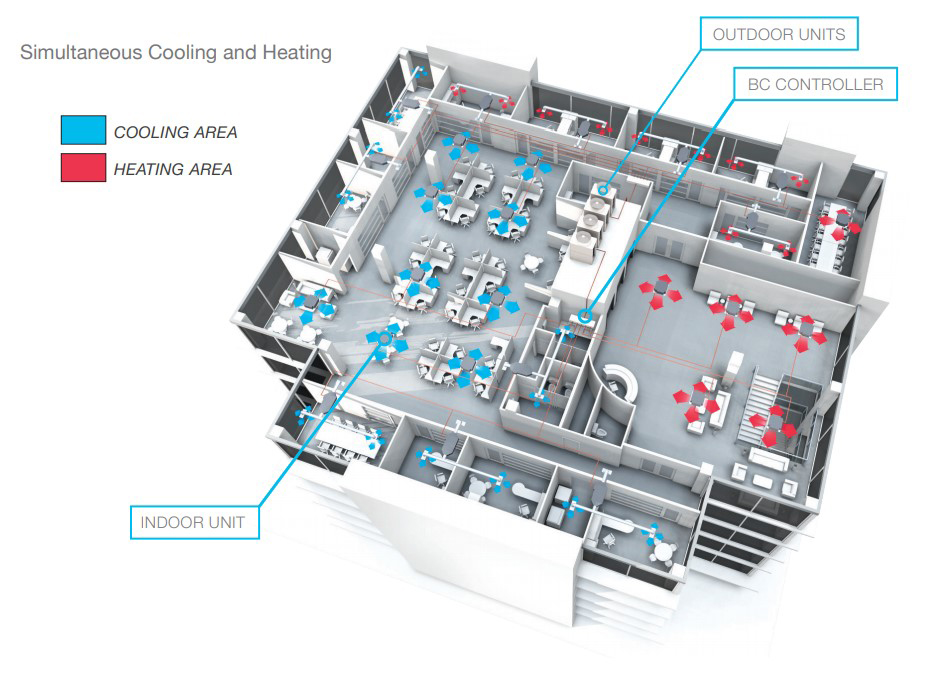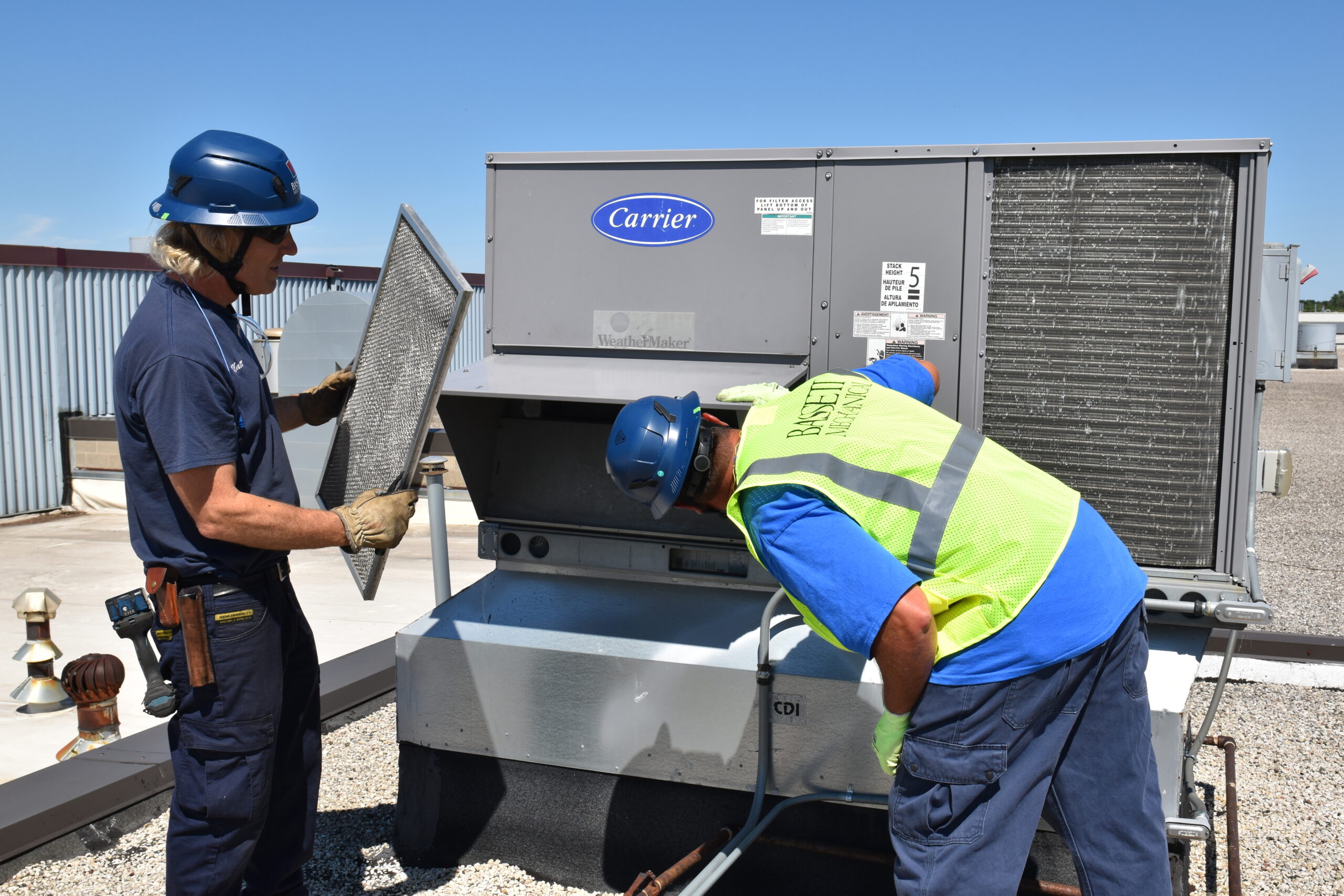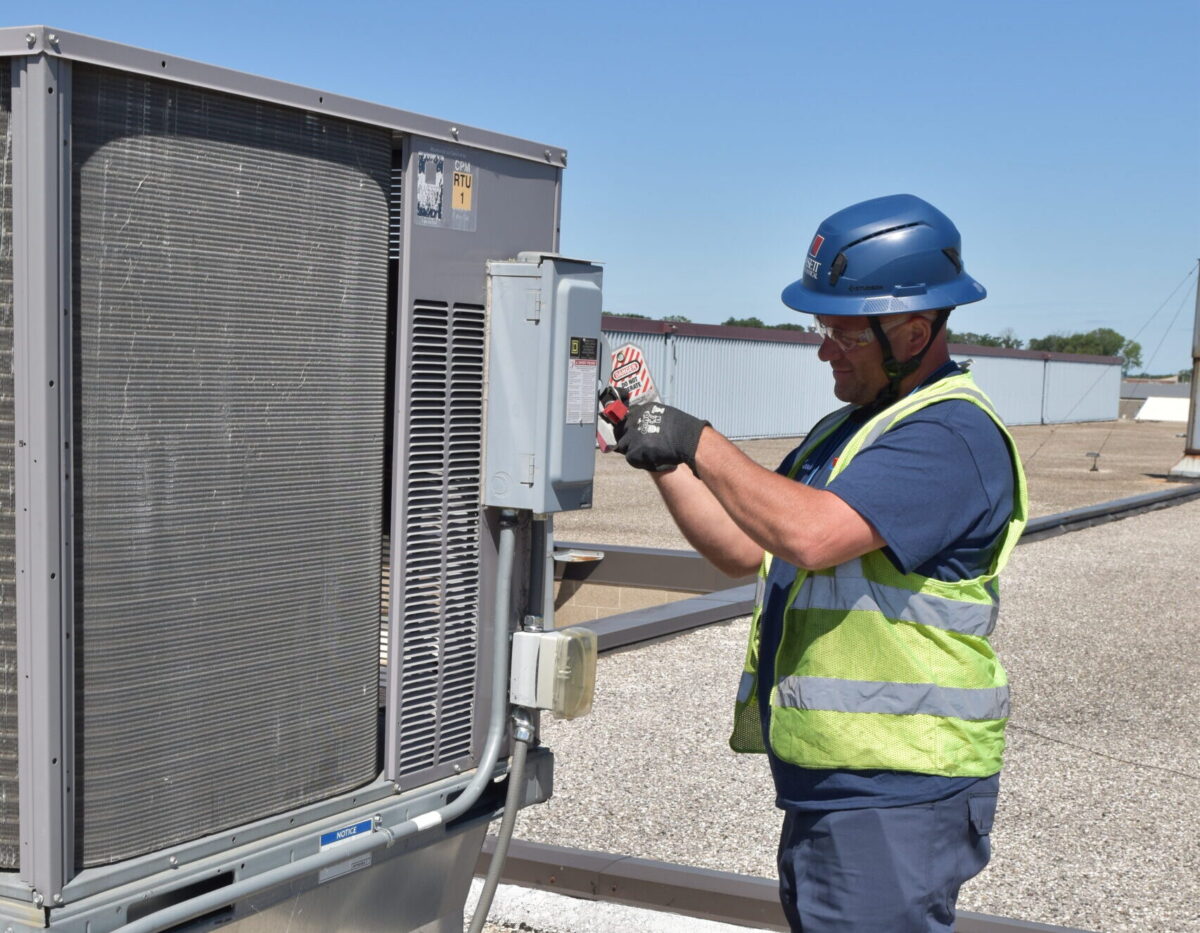It’s often called “the future of HVAC”. A variable refrigeration flow (VRF) system could be the solution you need for your building by providing maximum efficiency, maximum comfort, and maximum benefits.
WHAT IS A VRF SYSTEM?
VRF is a ductless system that distributes refrigerant to different zones through refrigerant piping, using outdoor condenser units and indoor fan coil units. It controls the amount of refrigerant flowing to each zone to be heated or cooled, any time of the year, to ensure total comfort and energy efficiency.
The most significant difference between the VRF system and a traditional HVAC system is its simplicity and energy efficiency. The VRF system includes less complex ductwork and bulky equipment. Instead of one large, noisy unit pumping out air to the whole space, a VRF system features several smaller air handlers that can be individually controlled and piped back to one system.

WHY CHOOSE A VRF SYSTEM?
The benefits are endless when it comes to a VRF system. Design flexibility, personalized comfort, and energy efficiency are the foundations. Here are six reasons why a VRF system could be the right option.
VRF systems can produce 30-40% energy savings.
- Efficiency. The need for energy-efficient HVAC systems has never been greater as there continues to be a focus on sustainability and eco-friendly practices around the world. Due to their high consumption of energy, buildings are on the front line of this issue. VRF systems can produce 30 to 40% energy savings, which is significant when 60% of a building’s energy usage comes from its HVAC system. The system is designed to provide exactly the right amount of heating and cooling needed for the current conditions, which means it runs less frequently and at a lower capacity. Compare that to conventional HVAC systems; with only two main states – on and off – conventional systems are less efficient, less effective, and less comfortable.
- Zoned Comfort. From cooling or heating a single room to a large commercial building with multiple floors or a large campus with multiple buildings, a VRF system is flexible and can be used in a variety of settings. It will provide you with precise, highly efficient comfort control. It computes the amount of refrigerant required by each indoor unit and controls the refrigerant flow to ensure desired comfort level without overcooling or heating the space. This in return makes for a happier and more productive space.
- Quiet Operation. Whisper quiet indoor unit operation adds to the comfort experience for building occupants. Standard units are like jet engines compared to the ultra-quiet VRF system. Indoor units are whisper quiet down to about 22 dB(A) and outdoor units operate at levels as low as 58 dB(A) which is about the level of a normal conversation. This allows for an uninterrupted work environment for any type of building.
- System Simplicity. From start to finish, VRF systems are easy to manage. They are easy to design and install and can be modified as the building needs change. Routine maintenance is simple and limited resulting in a lower lifecycle cost.
- Visually Discreet. VRF units are relatively compact, which gives architects, engineers, and building owners the opportunity to maximize usable space. The small size effectively frees up indoor and outdoor space where equipment and mechanical rooms are no longer needed. You’ll be able to effectively reclaim up to 10% of the space you sacrificed to conventional HVAC systems.
- Warranty. Mitsubishi Electric Cooling & Heating is one of the biggest names in ductless climate control. The company’s premier-level installers are called Mitsubishi Diamond Contractors and we are proud to be one of them! This allows us to offer an exclusive 10-year warranty on equipment – well above and beyond any other manufacturers.
IS A VRF SYSTEM RIGHT FOR YOUR BUILDING?
Whether you have an office building, mixed-use building, or a historical building, a VRF system could be the solution for you. It can be very cost-effective in new construction applications or existing spaces, eliminating expensive tear-down and reconstruction often encountered with traditional options.
A VRF system is also seen as a viable option in historic building renovations. Historical renovations already face many limitations, but due to the lack of ductwork in the system, it can still be installed by keeping the integrity of the building and meeting the requirements needed.
LOOKING AHEAD
Due to the large costs of heating and cooling in commercial buildings, HVAC system selection will continue to remain an important factor in both new construction and retrofit projects to help keep costs down and remain focused on energy efficiency.
Bassett Mechanical’s HVAC experience is extensive. If VRF technology is what your space needs, our experts can help design the right system for you and develop a maintenance plan to keep it running efficiently for years to come.



